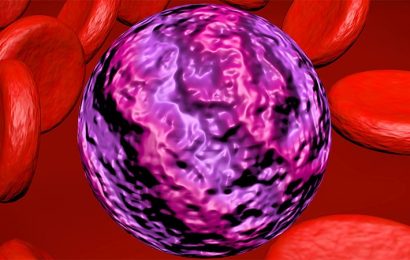Streamlining documentation has always been a goal at New Jersey’s St. Joseph’s Health because more time spent documenting in the computer means less time nurses have to spend with patients.
THE PROBLEM
Specifically, the challenge at St. Joseph’s was that the nursing assessment for patient admissions was very lengthy. There was a lot of information in there, so staff were trying to streamline that process. On the nursing units, they get a lot of admissions every day, and it takes a lot of time to do that initial assessment.
“We wanted to make sure we had the appropriate information in our admissions forms by regulatory standards while also capturing what we needed to design care plans for our patients,” said Judy Padula, RN, vice president, patient care services, and chief nursing officer at St. Joseph’s Health. “We also wanted it to be as streamlined as possible so the nurse didn’t spend extra time at the computer when they could be using that time caring for patients.”
Staff talked about this before COVID-19, but when the pandemic hit the Northern New Jersey area, the organization was getting at least 100 patients in the emergency room daily. Given the extremely high volume of admissions, the pandemic further emphasized the urgent need for staff to streamline the documentation and maximize the efficiency of nurses.
PROPOSAL
St. Joseph’s uses the Cerner electronic health record. Staff met with Cerner’s team well before COVID-19, right after the implementation of the EHR, to talk about ways they could use additional Cerner offerings to enhance existing services. At that time, Cerner mentioned the expedited admission intake essential clinical dataset (ECD) and St. Joseph’s was very interested.
“We wanted it to be as streamlined as possible so the nurse didn’t spend extra time at the computer when they could be using that time caring for patients.”
Judy Padula, RN, St. Joseph’s Health
“The proposed solution was to put in an expedited ECD for adult and pediatric patient admissions forms and patient history form for adult and pediatric patients,” said Janice Wojcik, RN, director of nursing informatics at St. Joseph’s Health.
“We discussed the larger ECD implementation before COVID-19. This solution was especially useful to us because it allowed us to analyze the data we already collected from end users. This was a two-week project where we sat down and did the analysis, then I went through as a clinician to see if it would make sense for us,” Wojcik added.
Cernercompany has regular ECD services that are centered on streamlining documentation, but when the pandemic hit, Cerner developed an expedited offering to quickly help users overcome this barrier.
MARKETPLACE
There are many vendors with electronic health records systems on the health IT market today, including Allscripts, athenahealth, Cerner, eClinicalWorks, Epic, Greenway Health, HCS, Meditech and NextGen Healthcare.
MEETING THE CHALLENGE
St. Joseph’s Health staff nurses are the primary users of this tool.
“The beauty of this solution is that it requires no additional training,” Wojcik remarked. “We didn’t have time during the pandemic to stop operations and train end users on a new system. With this implementation, nurses didn’t have to do anything outside of their regular workflow. That was a big bonus for us. The ECD solution is a feature of our Cerner Millennium EHR, which is a fully integrated platform enabling data to flow seamlessly from one system to the next.”
“The beauty of this solution is that it requires no additional training. We didn’t have time during the pandemic to stop operations and train end users on a new system.”
Janice Wojcik, RN, St. Joseph’s Health
Staff reached out to pediatric and adult end users to get feedback. They looked at four fields that were being filled out less than 10% of the time and really looked to see if they made sense there. Staff followed ECD guidelines to eliminate and modify certain fields.
“After implementing the ECD solution, we were able to achieve a 23% reduction in the total number of distinct elements on admission forms, eliminating fields that were duplicative or contained irrelevant information,” Wojcik said.
RESULTS
In partnering with Cerner’s Continuous Improvement Team to expedite ECD, staff achieved noticeable decreases in the average time to complete Adult Patient History Forms,the average number of clicks, and the number of distinct elements nurses had to complete in the admission forms for adult and pediatric patients.
“Cerner’s expedited ECD solution helped save nurses an average of 62 seconds per patient encounter, which works out to 190 hours a year saved,” Wojcik reported. “Nurses also experienced 15 fewer clicks per patient encounter, working out to 165,360 fewer clicks per year. That time is now freed up to spend more time caring for and listening to patients.”
ADVICE FOR OTHERS
“Others considering using this type of technology should move forward with it,” Wojcik advised. “This project was unique in that we implemented it over such a short period of time and during a time where we were experiencing unprecedented levels of surge across our facilities. The bigger message is to work with your vendor to see how you can optimize systems to deliver patient care under very stressful and trying conditions.”
Twitter: @SiwickiHealthIT
Email the writer: [email protected]
Healthcare IT News is a HIMSS Media publication.
Source: Read Full Article




